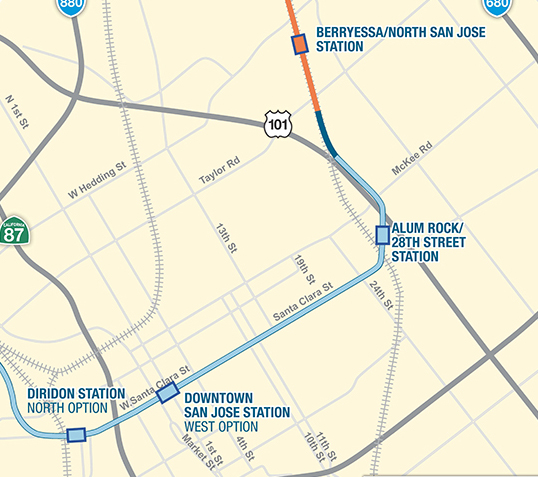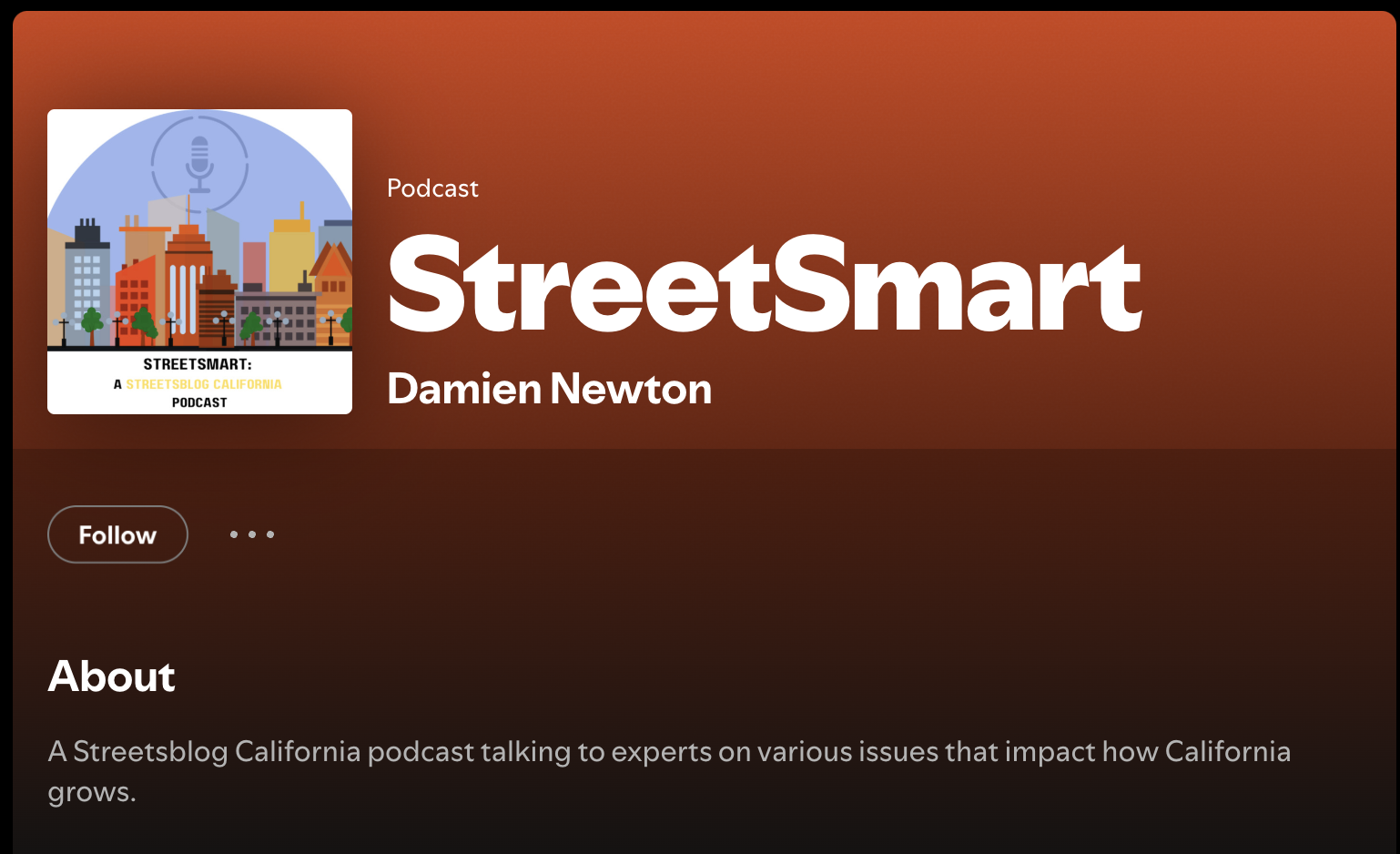The California State Transportation Agency (CalSTA) today announced the recipients of grants from its Transit and Intercity Rail Capital Program (TIRCP), which is funded by S.B.1—the gas tax—as well as California's cap-and-trade system.
Meanwhile, staff at the California Transportation Commission (CTC) released their recommendations for funding projects under three programs created by S.B. 1: Solutions for Congested Corridors, Trade Corridors Enhancement Program, and the Local Partnership Program.
The announcements were made just before gas tax opponents plan to deliver the signatures required to put their proposition to repeal S.B. 1 on the November ballot.
When asked what would happen to these projects and the funding if the repeal were to be successful, Senator Jim Beall, speaking at a press conference announcing the funding, said, “I have an answer to that. Poof! It all goes away.”
“It would be a very unwise decision to turn your back on this major transformative transit project for the Bay Area,” he said, referring to the extension of Bay Area Rapid Transit into downtown San Jose, which was awarded a TIRCP grant. “I have no doubt the voters of Silicon Valley will reject this foolish notion, which would seriously affect the Bay Area economy and Silicon Valley's economy.”
The BART extension is one of 28 grants from the TIRCP for transit projects throughout the state, for a total of $2.6 billion. Those grants are meant to support “transformative transportation” projects
They include, for example:
- The purchase of electric buses and charging infrastructure for multiple transit agencies in the state
- New train cars and a new communication system so BART can increase transbay service
- Improvements to existing train service between San Jose and Sacramento, between Santa Barbara and San Diego, in the Salinas Valley, and in the Central Valley
- Service improvements/expansions on multiple L.A. Metro lines
- Expansion of light rail services between Folsom and Sacramento
- Increased service and frequencies on San Diego trolley and light rail lines
- The BART extension into San Jose
- Increased transit services between Redding and Sacramento
And one of the grants—for $20 million—will go to the “Dublin/Pleasanton Capacity Improvement and Congestion Reduction Program,” which is basically a parking structure at the Dublin Pleasanton BART station—in the name of convincing drivers in far-flung places to get off the freeway and hop on BART.
CalSTA is also providing additional funding for some of these projects, bringing the total awarded to over $4.3 billion.
Meanwhile, the CTC staff recommends allocating $5.4 billion from S.B. 1 annually for a range of transportation projects including highway expansions, rail improvements, and some complete streets projects.
Those grants fall under three programs: Solutions for Congested Corridors, Trade Corridor Enhancement Program, and the Local Partnership Competitive Program.
The staff recommendations will be considered for adoption by the full commission at their meeting on May 16 and 17 in San Diego.
Projects that did not receive funding in this round may still be eligible for future funding rounds.
These three programs were the subject of multiple workshops to discuss and create goals and guidelines for allocating grants over the past year.
The Local Partnership program is specifically aimed at rewarding localities that have agreed to tax themselves for transportation, with each eligible jurisdiction providing a list of its priority projects to the CTC for approval. CTC staff recommended allocating over $308 million for 27 projects.
Projects in the Local Partnership program—the complete list is here—include the purchase of new hybrid buses, highway interchanges and soundwalls, a Complete Streets project in San Pablo, funding for Orange Line improvements, a bicycle/pedestrian mobility project in Woodland, and managed lanes on Highway 101 in San Mateo and Santa Clara. They also include at least two new highways, the Oakhurst Midtown Connector and the South East Connector, a new highway that the Sacramento region named its top priority project.
The Solutions for Congested Corridor program is supposed to support transportation solutions for busy corridors. Staff recommended nine projects to receive a little over $1 billion. The projects include a mix of rail projects—money for the Redlands Passenger Rail, for example—and additional highway lanes in the guise of HOV or “managed” lanes.
A number of transit projects did not make the list, although they may be eligible for future funding rounds. However, at least one piece of a project was deemed ineligible—a project that would add complete streets elements on Broadway in Sacramento was meant to enhance other congestion relief efforts on that section of Highway 50.
The Trade Corridor Enhancement Program combines state and federal funding to fix issues along freight corridors, including highways and rail. Staff recommended an initial allocation of $1.39 billion to 28 projects that are valued at more than $4 billion. This first round includes five years of federal FAST Act funding and three years of state funding from S.B. 1.
These projects include grade separations, “chokepoint relief,” freeway connectors, road widenings, and interchange improvements.






